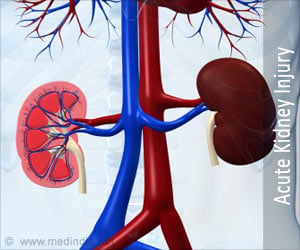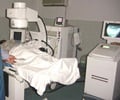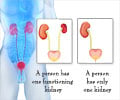Acute kidney failure can be treated with antioxidants. Peroxiredoxin, an antioxidant compound is effective in treating kidney injuries and also may offer likelihoods of longer kidney transplant storage.
Highlights:
- Peroxiredoxin, an antioxidant compound may be helpful in treating kidney injuries
- It has found to be effective in treating the tissue damage caused by ischemia-reperfusion
- Peroxiredoxin may also potentially offer options for longer kidney transplant storage
Read More..
Ischemia-reperfusion and Kidney Failure
The constant inflow of blood is required for the survival of living tissues. Ischemia, the restrictions in blood supply, leads to a shortage of oxygen and nutrients. Tissues could turn more acidic and the permeability of the cell membranes could be impaired because of ischemia. This eventually would cause tissue damage, making the kidney, heart, and nerve tissues most vulnerable. Upon resumption of blood flow, the reperfusion does not allow for the regeneration of the damaged tissues to take place. Alternatively, the cells would be further harmed because of the oxidative stress caused by the growing concentrations of reactive oxygen species (ROS). Pathologically high counts of ROS may cause apoptosis, a condition where cells self-destruct.Ischemia could be caused by constriction of the blood vessel, variations in heart rate or blood pressure, blood loss and trauma.
A key factor in organ pathologies is ischemia-reperfusion syndrome, which leads to death in half of the cases with acute renal failure when it affects the kidneys.
Treating with Antioxidants
In the tissue damage caused by ischemia-reperfusion, there is oxidative stress involved and therefore, treatment using antioxidants would be a promising option. The oxidative stress is reduced by these compounds, which lower the ROS concentration.Antioxidant enzymes from the peroxiredoxins family have been used by the Russian research team in their recent study. These enzymes reduce the level of the ROSs called peroxides in addition to playing a role in cell signaling.
Peroxiredoxin 6, also known as PRDX6, is the most sought after among the six known enzymes from the peroxiredoxins family. PRDX6 has the ability to neutralize both organic and inorganic peroxides in large numbers.
Effectiveness of Peroxiredoxin 6
In order to demonstrate the efficiency of the enzyme in treating kidney ischemia-reperfusion treatment, the injury was modeled in mice by the research team.The survival rates of the group of animals that received PRX6 treatment were compared with those that did not. 3 of the 5 mice that received a PRX6 infusion 15 minutes prior to ischemia survived by day four, whereas only 1 in 5 from the other group remained alive by the same time.
Edema, vessels are swollen with blood in the kidneys, degenerated renal tubal alongside the higher concentration of kidney damage markers and transcription factors that could be accountable for inflammation development were present in the untreated mice induced with ischemia-reperfusion. On the other hand, the changes, pathological and morphological in nature, displayed by the kidneys of the test animals that received PRX6, were much smaller.
A mutant version of the enzyme synthesized by the research team was used with the aim of ruling out the possibility that the PRX6 benefits and peroxide suppression are unrelated. Despite sharing the same structure, PRX6 does not affect the peroxide levels. No positive effect on mice survival was noted following the administration of mutant enzyme 15 minutes before ischemia. The therapeutic effect, therefore, is the result of the compound's ability to keep peroxides in check.
The study, which appears in Cell and Tissue Research, has reported that survival rates tripled in test animals treated with the chemical prior to sustaining an ischemia-reperfusion injury.
The senior author of the study Mars Sharapov of MIPT and the Institute of Cell Biophysics said, “We observed the intravenously infused PRX6 in the animals’ bloodstream, under kidney ischemia-reperfusion. That is, it did not enter the cells. Despite this, PRX6 effectively neutralized the peroxides that were released by the cells into the extracellular environment. This suppressed oxidative stress and apoptotic cell death, resulting in significantly less tissue damage,” commenting on the team’s findings.
Source-Medindia
















